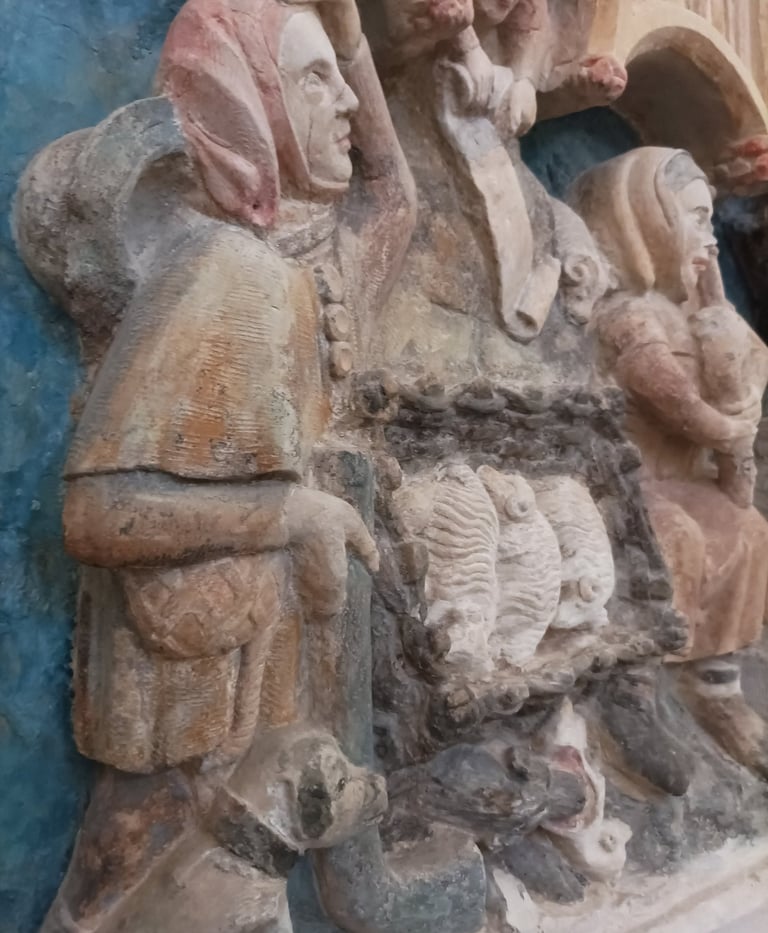
In a Time before Tintin.
A Bande Dessinée with a Difference
FILMS , MUSIC, DRAMA AND ARTBUILDINGS AND ARCHITECTURE
Joan
9/7/20234 min read
Yesterday we returned to our local village of Le Caylar in search of something very special. A tourist guide describes it as 'un véritable bande dessiné en trois dimensions!' (A real three dimensional comic strip.) Unlike the previous occasion, this time we were in possession of a very large bunch of keys, which we had obtained from the mairie. Our destination?... L'Eglise St Martin. But what possible connection could a village church have with a bande dessiné ? We tentatively pushed open the door which led from the rear courtyard into the dark presbytery with its jumble of brooms and buckets. Pushing open a second door we entered the main church, where light flooded in through tall windows. I immediately turned towards the altar, for that was where hoped to find what I had come to see. Alas it was not there.
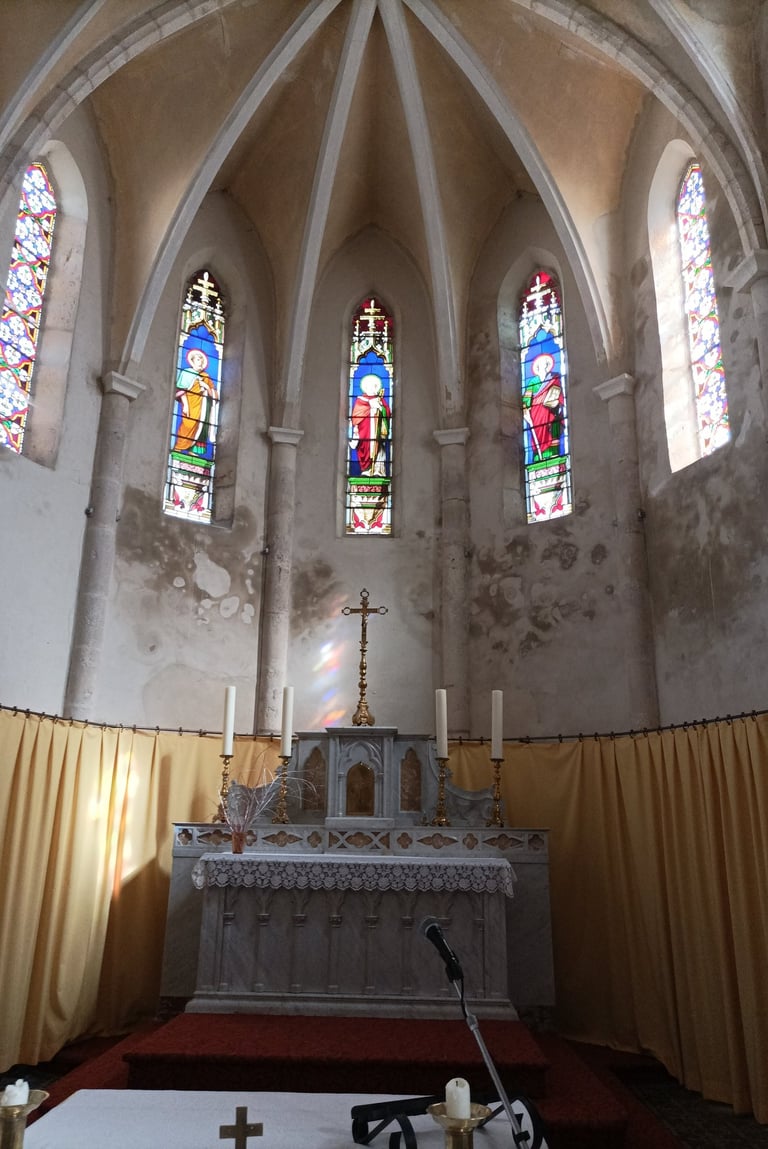

I spun round in dismay, taking in a large wooden statue of Christ on the cross, which I understood to be from the twelfth century, together with various paintings and plaster statues. But where oh where was the three dimensional 'bande dessiné'?
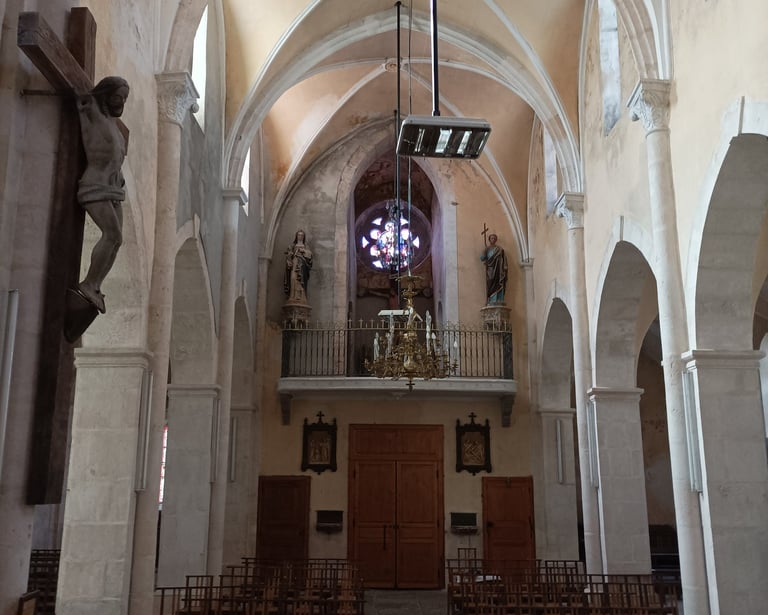

One last spin and there it was in front of me in all its medieval splendour. Once an altar piece ( or retable) it had been given its own place on the north transept wall.
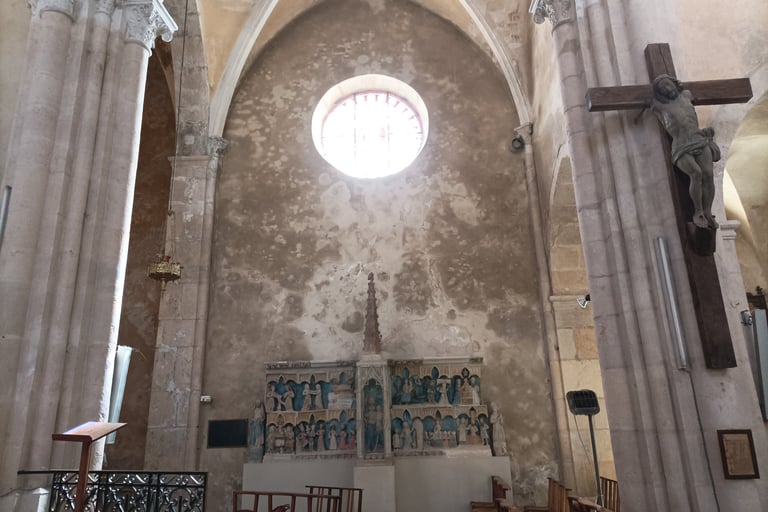

Not terribly impressed? Come a little closer and I guarantee it will take your breath away.
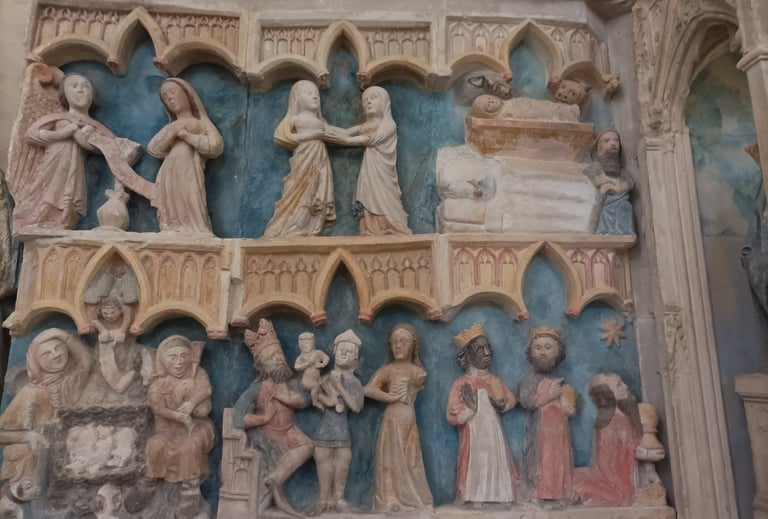

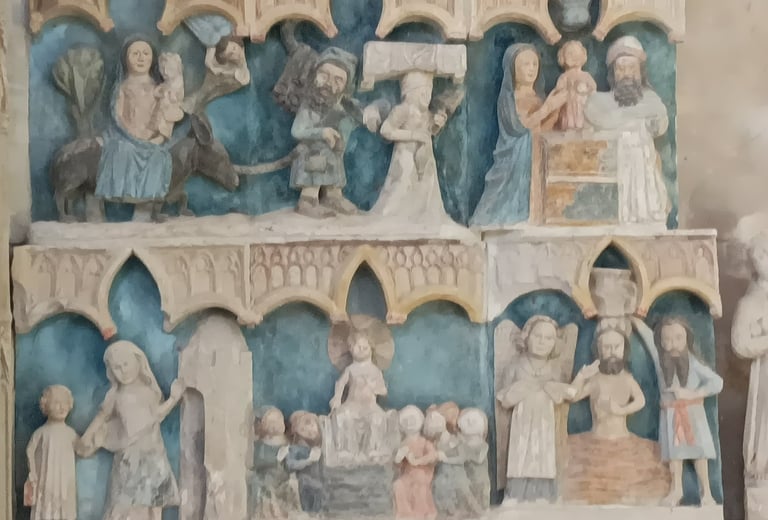



Central figure of Mary 12C
Left hand Panel 14C
Right hand panel 14C
"Pah" you may possibly say. "How can they compare this to the great entertaining bandes dessinés of our time, like Tin Tin or Asterix the Gaul?" But try to imagine yourself back in the world of medieval peasants , sitting in a cold and draughty church, listening to long and, dare I say boring, scriptures. This was a time when the average person could not read, and the printing press had not been invented. What better way to teach the scriptures in an entertaining fashion than this 'strip comic' in three dimensions? I am sure many eyes would be drawn to this. Now look a little further with me, and some sections may even make you smile.
The tableau represents the different stages of Christ's life, beginning (top left) with The Annunciation.
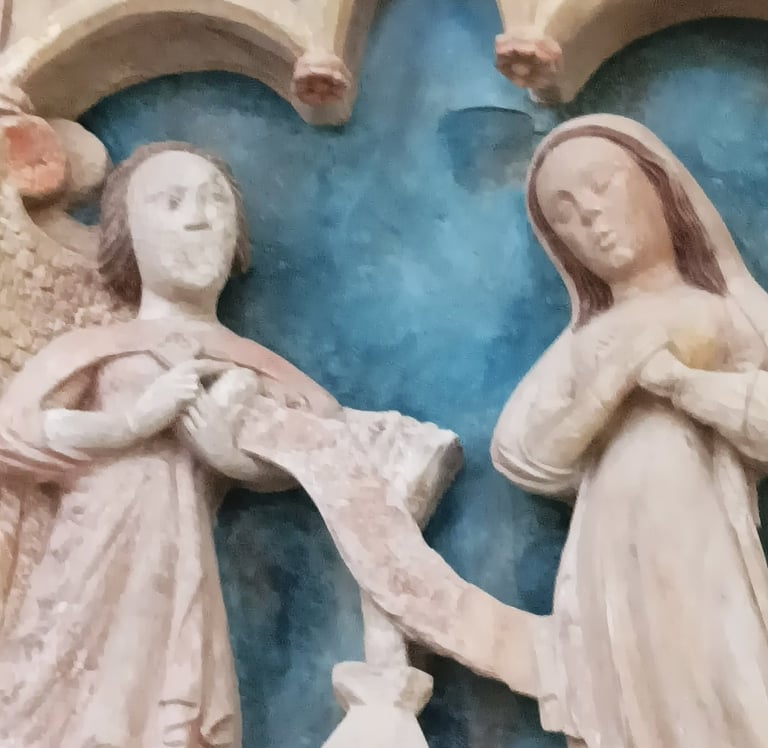

Here we see The Baptism of Christ by John the Baptist.


...and here The Flight to Egypt .
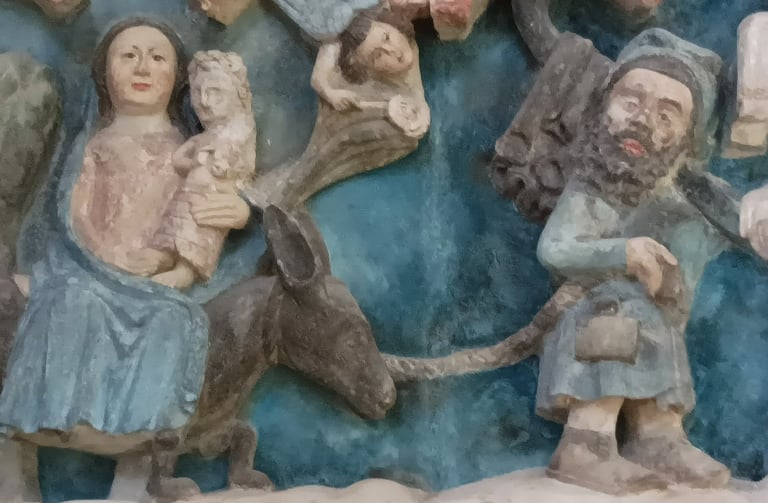

But I am no historian, so why do I love this, and other medieval art so much? It is largely because this work was carried out by artisan sculptors. These images give us an insight into the actual people of the time, and the lives that they led. Just look at the figure of Joseph as he leads Mary on the donkey. Can you not imagine meeting him in the street, or drinking a flagon of ale with him?
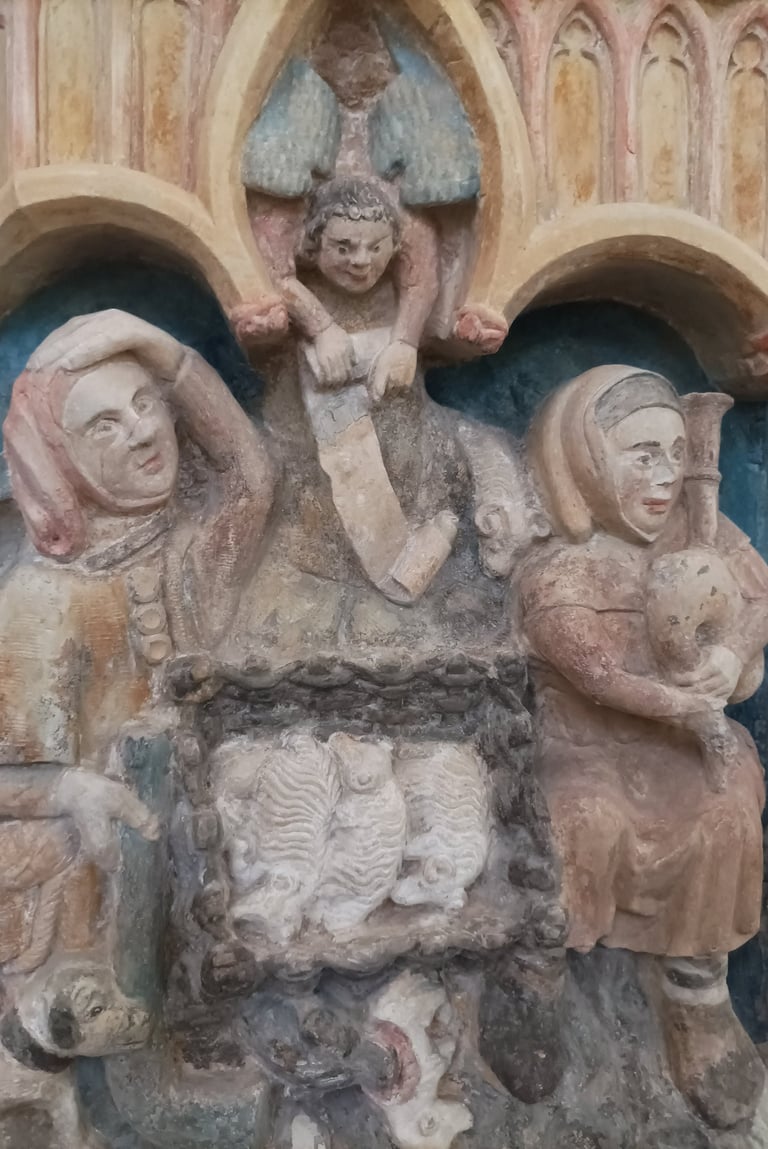

My favourite panel reflects this more than any other. It is the picture of the shepherds who seem to be bearing a gift of lambs in a basket. One is playing a simple set of bagpipes, which tells us something about life at the time. Now look more closely and you will see that this particular artisan has injected his own humour into the work, much like the medieval stone masons did with their weird and wonderful gargoyles that we see adorning grand cathedrals. Look below the basket to where one lamb has fallen out, and what do you see?



